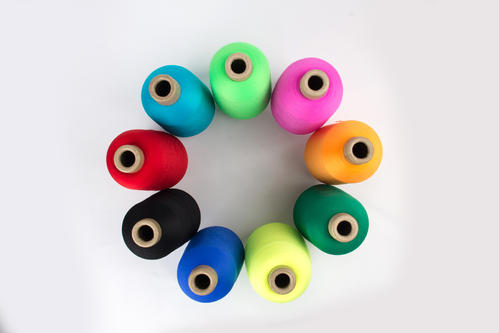The direct cause affecting the uniformity of nylon dyeing
From the perspective of the entire dyeing and finishing process, the direct reasons that affect the uniformity of nylon dyeing are uneven warp and weft density of the fabric, unequal yarn count, and uneven production batches of nylon fibers used on the fabric. These factors may all affect the dyeing function of nylon, leading to uneven dyeing.

From a fiber perspective, the chemical structure of nylon fiber is polyamide, with a certain amount of amino groups at the end of the fiber molecular chain. The dyeing properties of nylon are influenced by the chemical and physical differences of the fiber, which may occur during the fiber manufacturing or processing process and directly affect the dyeing function of the dye. Chemical differences arise from variations in the amino content of fibers, which may occur during the spinning process, thermal drawing process, or merging process. The difference in amino content can lead to different dyeing rates, especially the final adsorption capacity of anionic dyes, which can only be reduced to a low level through careful control of the production process. The differences in the physical structure of yarns mainly include two aspects: on the one hand, they come from the overall physical differences of yarns, including differences in yarn count, number of fibers in yarns, or fiber fineness, as well as differences in the end bending of a single fiber or the end bending of multiple fibers in yarns; On the other hand, it comes from the heterogeneity of the supramolecular structure that occurs during the processing of nylon fibers, such as differences in crystallinity and orientation within the fibers or non-uniformity in the core structure. When dyeing fabrics made from nylon fibers with chemical or physical differences, a characteristic weft stripe occurs easily.
Article source: Nylon colored yarn
-
05-27
The reason why fabrics containing spandex are prone to yellowing
Spandex is a commonly used fiber variety in our daily lives, characterized by good elasticity, low fineness, high elastic modulus (cracking elongation can reach 400-800), and low specific gravity. Spa
-
04-24
Colored non dyed nylon with synthetic fiber raw material
The current conventional fiber coloring mostly uses yarn dyeing method, which has long process, high loss, high cost, and the product has color difference and low color wash fastness. Yarn is prone to
-
03-26
What are the characteristics of non dyed spandex?
Non dyed spandex has also been widely used in recent years. Non dyed spandex fiber can be blended with fibers such as nylon, polyester, acrylic, cotton, wool, etc., which can give fabrics excellent el
-
02-24
The influence of yarn structure on fabrics
The basic characteristics of yarn include its appearance and shape, twisting characteristics, fiber transfer and distribution characteristics in the yarn, as well as the surface fuzz and internal loos
